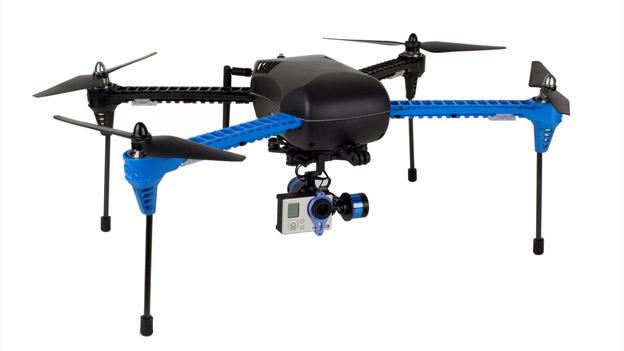How do you catch a drone?
- Published
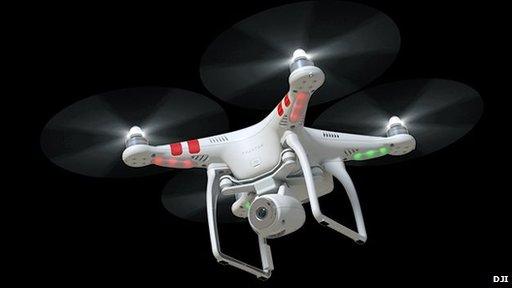
Phantom 2 models will use GPS data to check whether they are entering a restricted zone
French authorities have been left mystified by two consecutive nights of illegal drone flights over central Paris.
The small unmanned aircraft appeared over landmarks including the Invalides military museum, Place de la Concorde, and two of the old city gates.
Environmental activists, terrorists, and pranksters have all been mentioned as possible suspects, but no-one has claimed responsibility.
The difficult question now for the Paris authorities and in cities around the world is, how do you catch a drone?
We've taken a look at five of the best options.
Shoot it down
Since the September 11th attacks there has been a shoot-down policy in place for any aircraft in UK airspace deemed to pose a threat.
If authorities were sufficiently concerned about a drone they could in theory scramble RAF jets on a rapid reaction alert to shoot it down.
A jet fighter to down a cheap, commercially available drone might seem like a hammer to crack a nut, but aviation expert Chris Yates told the BBC that even a small drone could present a threat to sensitive locations. These kind of drones could be fairly easily modified to carry a payload, Yates said.
Laser it
Not as far-fetched as it might sound - both China and the US have successfully experimented with anti-drone lasers.
In November last year, Chinese state media reported that the country had developed a highly accurate laser weapon system that can shoot down a drone within five seconds of locating it.
US Navy shows laser shooting down a drone
The laser reportedly has a range of 1.2 miles (1.9km) and is effective up to a maximum altitude of 500m (1,600ft). The weapon works by fixing a laser beam on the aircraft for long enough to burn through it.
In 2012, the US military tested a similar system aboard a Navy ship, successfully downing a surveillance drone.
No-fly zone
Last year, a drunk government employee stirred up a security frenzy at the White House after accidentally steering his DJI Phantom drone onto the president's lawn.
In January, SZ DJI Technology, the Chinese manufacturer of the hugely popular Phantom, introduced a firmware update to the drone that aimed to prevent it happening again.
Now GPS will detect whether the drone is within a 15.5 mile radius of central Washington DC and cut the motor - so if you try and fly towards the famous doric columns your drone will have a bumpy landing somewhere short.
The same technology, external also prevents drones flying anywhere near airports. DJI has said it is now planning to prevent its drones crossing borders after enterprising drug dealers were caught trying to fly methamphetamine from Mexico to the US.
Use a net
One ingeniously simply way to catch a drone is to use a bigger drone, with a net. Earlier this month, shortly before the mysterious flights over Paris began, French authorities launched a DJI Phantom and then sent up a bigger drone to go after it.
The successful demonstration, in La Queue-en-Brie, east of Paris, followed illegal drone flights over at least 13 nuclear facilities in France that left authorities concerned about security. With no bullets, missiles, or lasers needed, this could be an attractive option in urban areas.
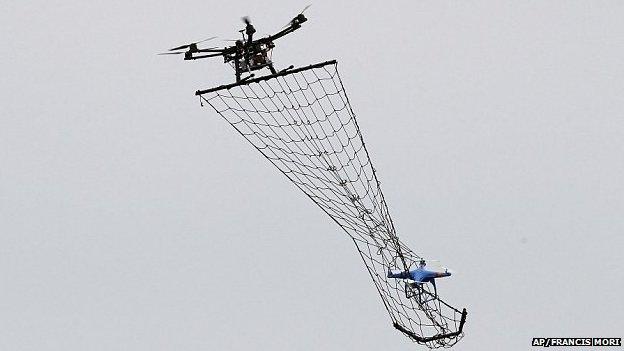
A drone to catch a drone
Jam it
One problem with tracking drones is that they are just too small for ordinary radar, which can confuse them with birds.
And if they are non-metallic, they won't trigger a radar return. But they do require some signals to operate - either radio, from a remote control somewhere nearby, or GPS - and those could technically be interfered with in order to incapacitate the drone.
Authorities with the means could also hack into the aircraft and seize its controls.
- Published9 December 2014
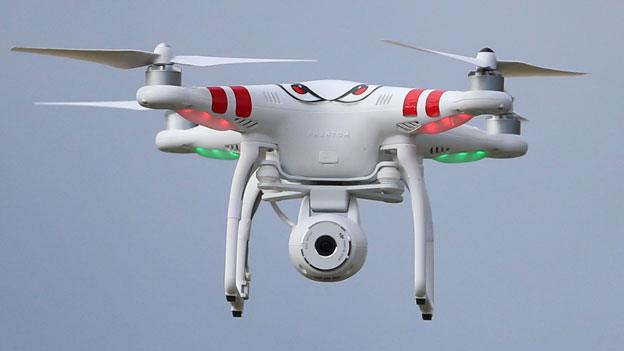
- Published24 February 2015
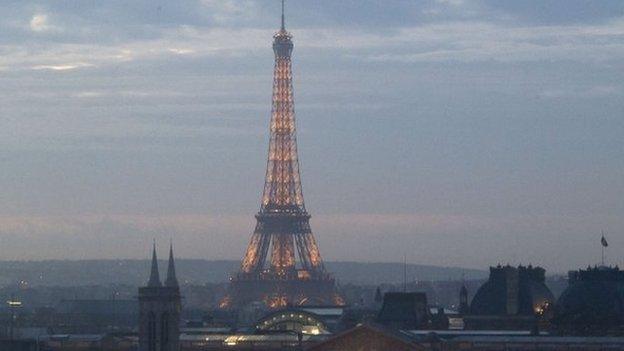
- Published30 October 2014

- Published23 February 2015
